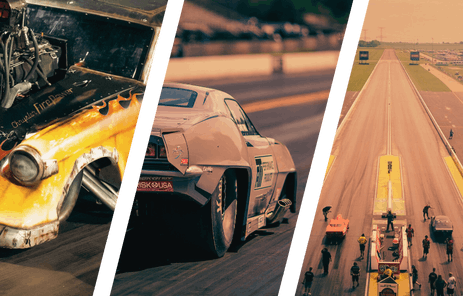A few months ago, sportsman racing superstars Peter Biondo and Kyle Seipel once again took a weekend hiatus from terrorizing the competition to don their promoter caps at the second annual K&N Spring Fling 20’s down in Bristol, and despite little to no chatter from we in the media, again contested their high-stakes bracket racing showdown on a 1,000 foot course.
Referred to as the “1,000 Foot Compromise,” the Spring Fling 20’s format is rather unique in the bracket racing arena and provides a happy medium for racers from the north, who are more accustomed to 1/4 mile racing, and those from the south, who typically compete on the 1/8 mile as they converge upon the same stage. And despite the finish line being out of the norm for any driver in the field, from all accounts, the racers by and large have given it an enthusiastic thumbs-up.
While such an event being held on the 1,000 foot race course that’s become customary in the NHRA nitro ranks isn’t particularly significant or earth-shattering, what it has done is quietly inched 1,000 foot racing closer to wide acceptance from the drag racing community.
In addition to the Biondo and Seipel brainchild, drag racing’s waterlogged counterparts in the Lucas Oil Drag Boat Series have also reigned in their three top categories to a 1,000 foot distance in the name of safety.
Since the NHRA made the unprecedented transition to a shortened race distance for the first time in it’s then 57-year history at the 2008 Mopar Mile High Nationals in Denver in the wake of the tragic death of Scott Kalitta, no topic in the sport has been more widely discussed or come under more fire from the racing community. Traditionalists put their foot down and voiced their opinions with their wallets, as dwindling attendance and falling television ratings were at least partially attributed to what many considered 3/4 of a real drag race.
But nearly three years later, the 1,000 foot negativity has all but subsided among fans that once demanded quarter-mile-or-else.
And now, following a rash of incidents in other categories, including the unfortunate passing of Mark Niver and Neal Parker last season, the catastrophic tire failures of a couple of A/Fuel Dragsters, Leah Pruett-LeDuc’s recent beach excursion, and Pro Modifieds running just a mile an hour and change from the 260 barrier, it’s hard to imagine that some rule adjustments haven’t been tossed around in the upper level boardrooms in Glendora. Which begs the question: would racers and fans prefer 1,000 foot racing across the board rather than castrated race cars whose performance capabilities are set back 20 years in the name of making the full pull?
Drag racing is and always has been about records first and foremost, and while Top Fuel and Funny Car crew chiefs are still pushing the performance boundaries that have been on the move since the day the sport took its first breathe, it’s clear that that continual journey to the depths of wheel-driven potential will have to cease in order for quarter mile racing to return. In essence, the alternative to a shortened distance is race cars turning numbers seen during the George H.W. Bush presidency. The NHRA has indicated some wariness with Pro Stock Motorcycles running 6.70’s at almost 200mph, and the Pro Mods are nearing Scott Cannon’s 5.73 that was essentially the straw that broke the camels back for quarter mile outlaw racing, meaning decision time could be on the horizon for a couple more categories.
Despite being a slap in the face of a tradition as deeply rooted as any in motorsports, the continued pursuit of ultimate performance may outweigh negative progress, and as much as those in the sport object to it, 320 less feet may just be the start of a new tradition.
You might also like
PRI 2025: Andy Mcpherson's Awesome Coyote-Swapped GMC Syclone
Andy Mcpherson didn't want to build your average GMC Syclone. His truck is powered by a Ford Coyote engine.





